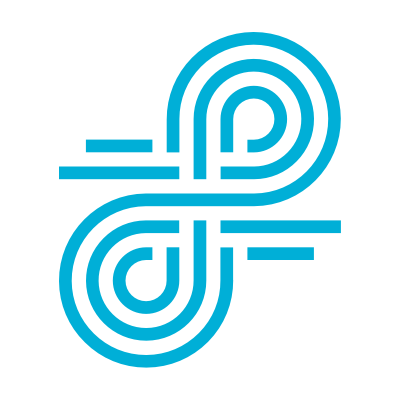With soaring rates of mental health challenges among children and teens, leading pediatric health experts have declared a national emergency in child and adolescent mental health. This situation is exacerbated by current school mental health staffing challenges, making a bad situation almost insurmountable.
Not only do schools not have the staff to address the rising demand for mental health services, but many also lack the capability to monitor and assess student behavior in one of the most common places they interact—online. In a post-pandemic environment, more student learning and engagement is happening online. Kids and teens are spending more time than ever on screens and social media, both at school and at home. As students interact more in this new digital environment, they often reveal things they may feel uncomfortable sharing in person or with parents. This information can be invaluable for helping identify students in distress and knowing how to best help them.
Innovative artificial intelligence-based solutions enable schools and districts to detect unknown risks and more effectively provide all students with the support they need. And, with the shortage in school mental health professionals reaching crisis levels, schools can and should harness the power of technology to extend staff bandwidth. These new tools can help district counselors prioritize mental health resources, drive earlier, more effective intervention and support, and create a more responsive school environment.
Read further to learn ways technology solutions can address staff shortage gaps.
School counselors and psychologists remain scarce as needs rise
It is no secret that the state of student mental health has been deteriorating over the past decade. The pandemic only served to worsen the steadily rising rates of depression, anxiety, loneliness, and suicide. And, with more than 70% of children who receive mental health support doing so in a school-based setting, schools are reeling from the increased pressure to meet the mounting needs of their students.
“I think the role of school counselor has always been important and is now more important with the increase for mental health needs,” said Maritza Gonzalez, director of counseling with Hays CISD.
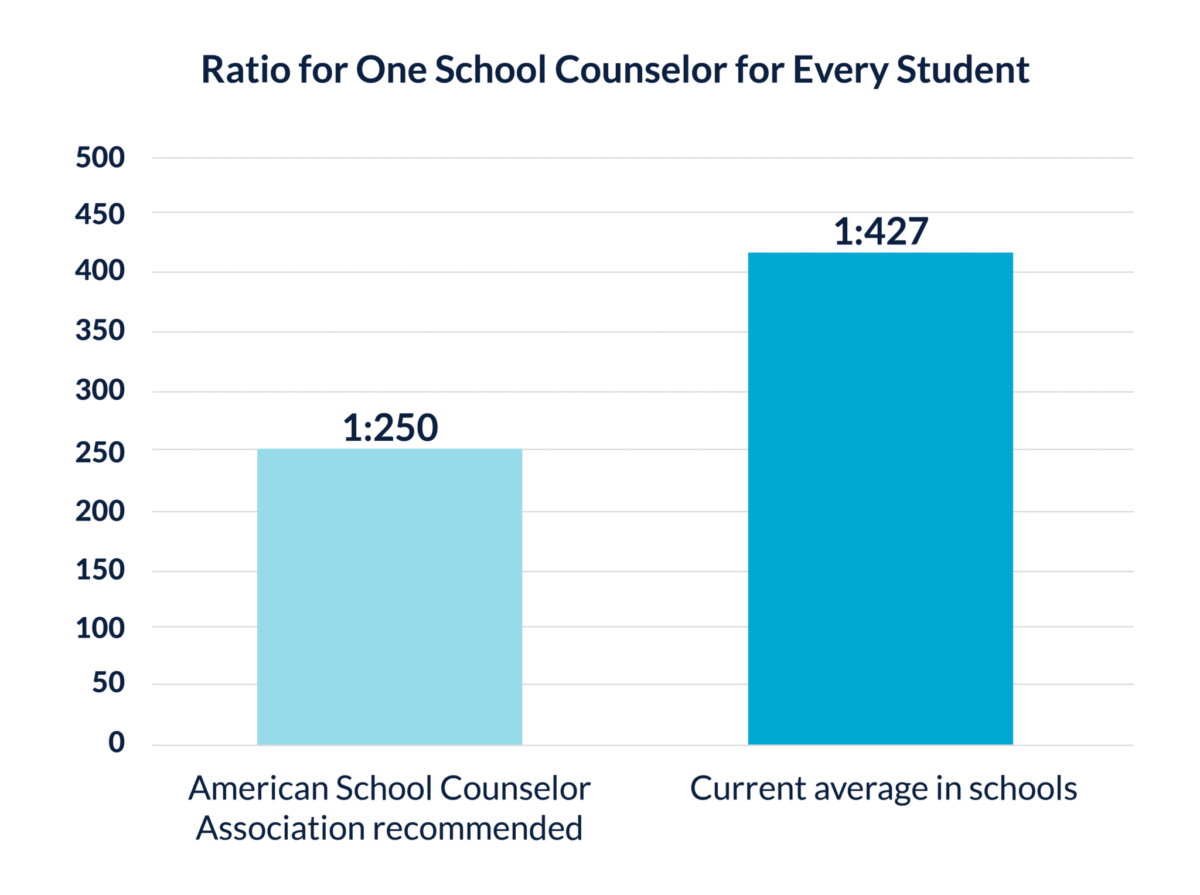
However, many K-12 schools across the country lack the mental health personnel required to respond to the growing need. Nationwide, schools are falling short of recommended mental health professional to student ratios. One 2019 report found that only one in five U.S. high school students are enrolled in a school sufficiently staffed with school counselors. While the American School Counselor Association recommends one school counselor for every 250 children, the current average in schools is around 427 students for every counselor. School psychologist-to-student ratios are even worse, with only eight percent of schools meeting recommendations.
We cannot hire our way out of this problem
Even with an influx of both state and federal funding, including $1 billion for schools to hire counselors, school psychologists, and nurses, schools are scrambling to fill mental health vacancies.
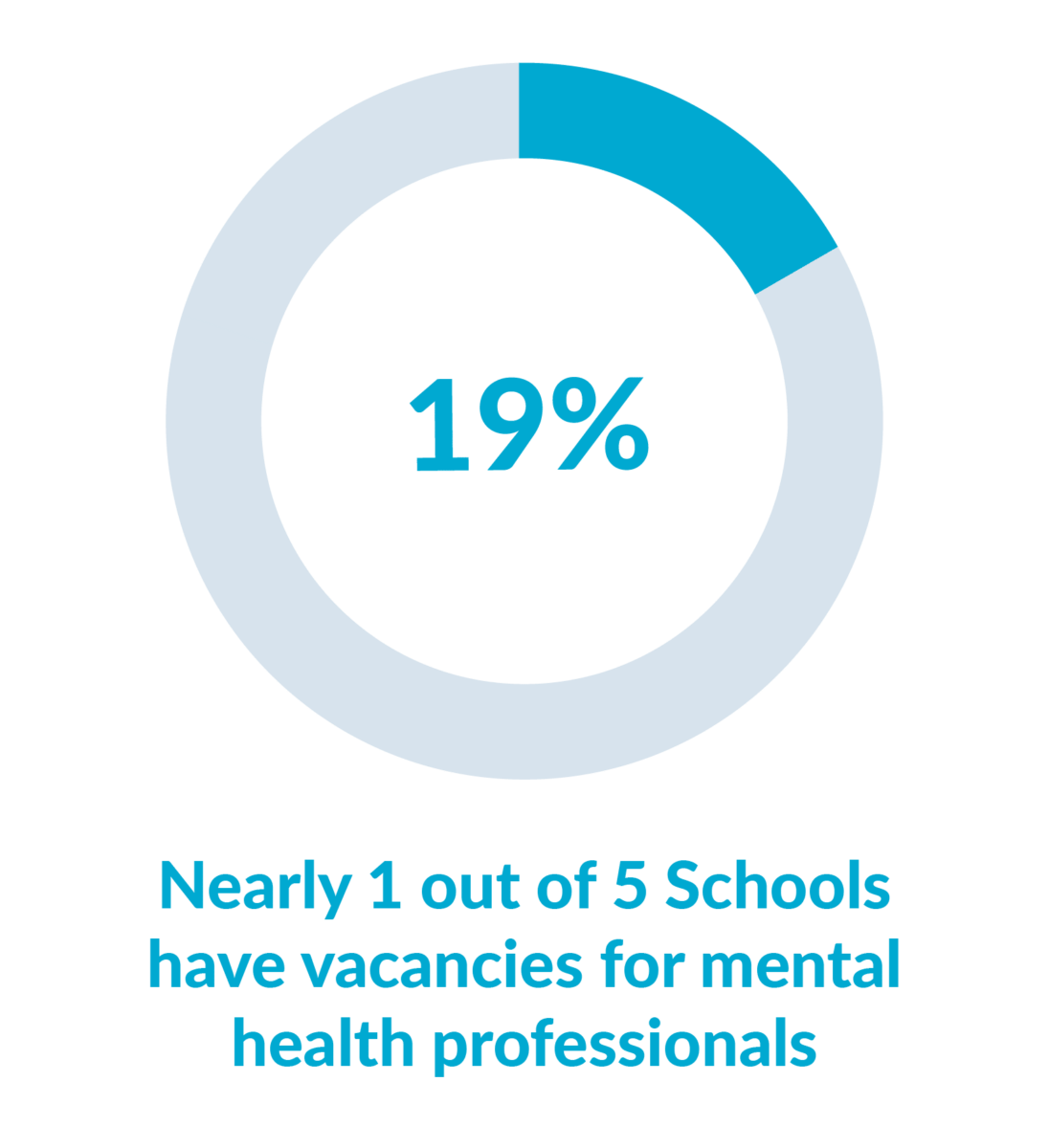
Going into the 2022-2023 school year, 19% of public schools have vacancies for mental health professionals. Among schools with these vacancies, 84% reported it will be somewhat or very difficult to fill these mental health positions.
The pipeline of school psychologists was struggling to keep up with demand even before the pandemic. New professionals are not entering the field fast enough, and many mental health practitioners have transitioned out of the school environment in search of higher pay and better working conditions. This problem is even more pronounced in rural areas.
Challenged by a lack of staff and resources, schools are struggling. High caseloads make it impossible for school psychologists and counselors to adequately meet students’ mental health needs. School-based mental health professionals find themselves constantly reacting to crises or bogged down by administrative tasks that do not impact student well-being. While some students must wait for urgently needed help, others are silently slipping through the cracks. Students aren’t the only ones impacted either. Stuck in constant crisis mode, mental health professionals are experiencing unprecedented levels of stress and burnout that further exacerbate their ability to support students.
School technology must become a priority when addressing student mental health
While many districts are looking to creative solutions, such as mental health days for students and training and empowering educators and peers to spot signs that a student is in distress, technology solutions are critical to scaling and prioritizing mental health resources, helping address the pain of “not enough time, not enough people.”
Online monitoring tools are becoming essential components of school safety and wellness plans. At-risk student identification solutions, like Lightspeed Alert™, monitor and analyze student online activity for signs of self-harm, violence, and bullying. In addition, best-in-class solutions include a human review component that prioritizes urgent concerns while augmenting existing school resources. With these types of solutions, schools can:
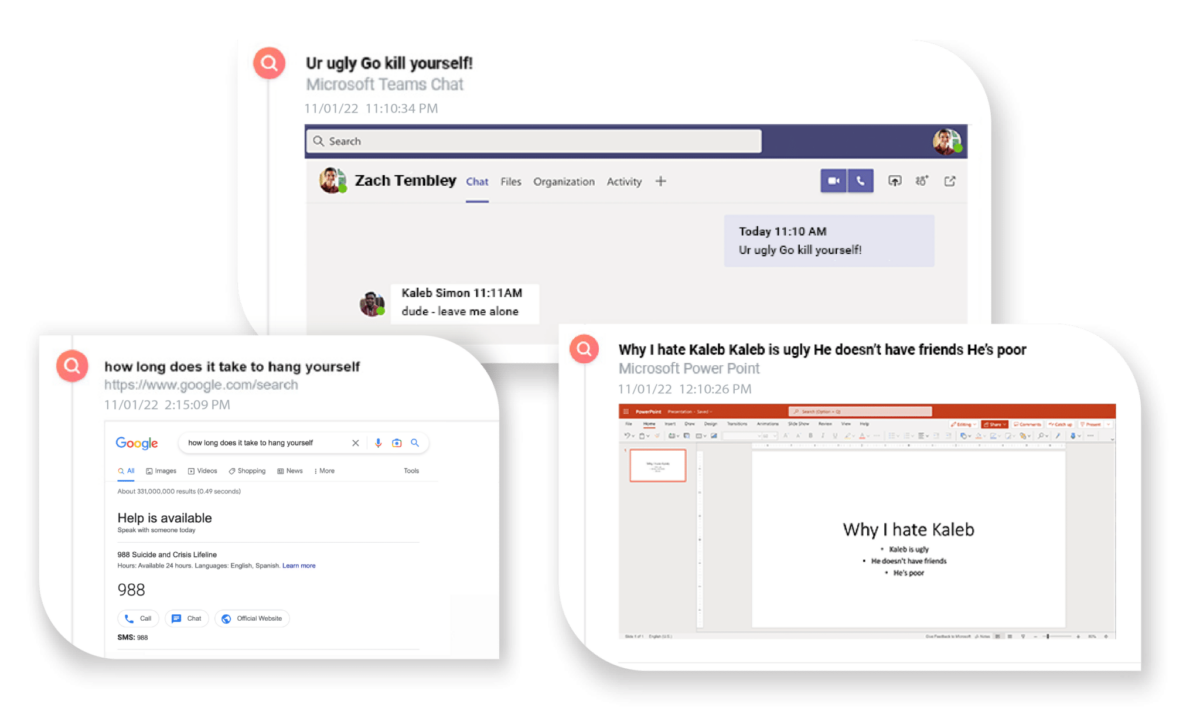
1. Extend behavior monitoring capabilities with artificial intelligence (AI) that scans student online activity for warning signs of student distress, including self-harm, violence, and bullying
Sophisticated AI technology scans and analyzes student online data across the internet—social media, online docs and images, email, YouTube, apps, browsers, search engines, and more—flagging potential risks and threats for further review. This automated ability to sift through an overwhelming amount of student-generated data for at-risk behavior and warning signs not only saves mental health professionals time, but also helps extend their reach by identify suffering students who may not be on schools’ radars.
With staffing shortages diminishing counselor visibility and accessibility, many mental health professionals are struggling to develop relationships in which students feel comfortable approaching them with their problems. So, while staff cannot be everywhere, technology like this serves as a powerful safety net for catching warning signs that would normally go unnoticed.
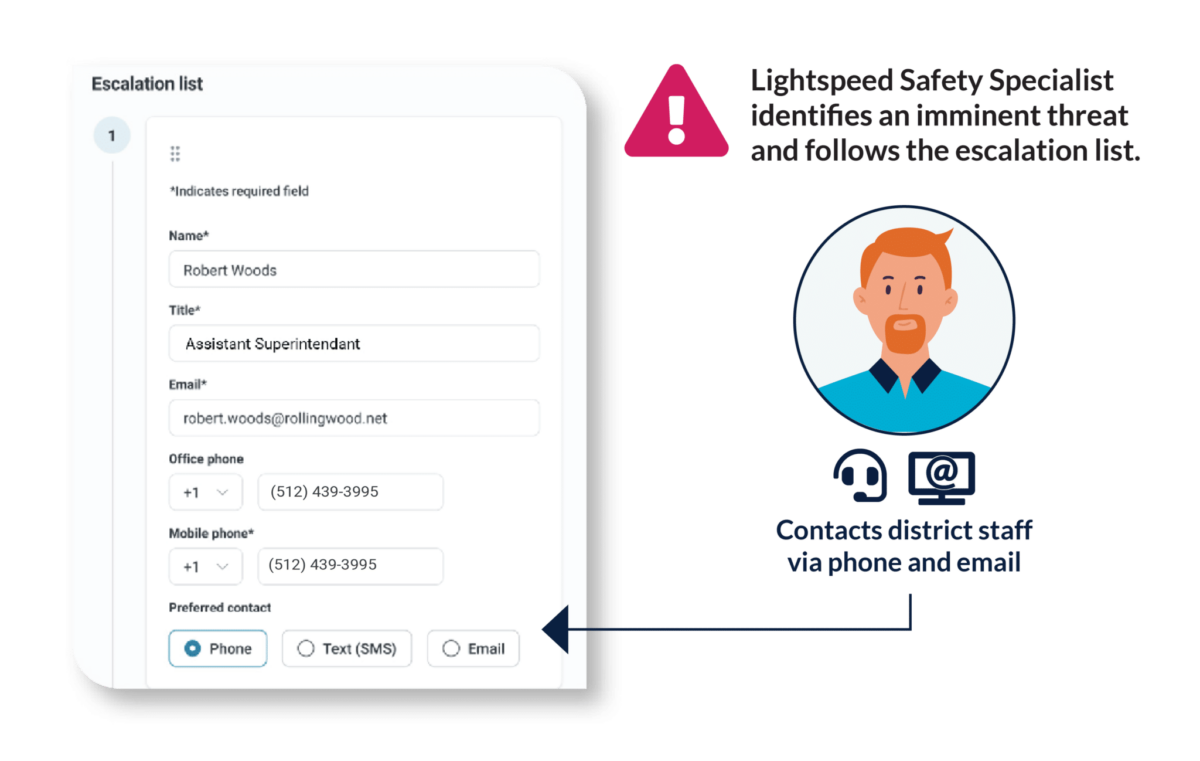
2. Expand staff bandwidth and escalate high priority concerns with trained human review of potential risks
Safety specialists augment district resources with 24/7/365 evaluation of critical events, ensuring that urgent issues are escalated in real-time. Designated school and district personnel are contacted immediately about high risks and imminent threats —regardless of the time or day they occur. With the peace of mind that the most pressing concerns will be prioritized and escalated to appropriate school and district contacts, staff can devote more time to building relationships and creating a safe and connected school environment for all students.
3. Provide staff with relevant incident information, including screenshots, browser history, and case notes, supplying necessary context for rapid and informed decision-making
At-risk student identification technology contextualizes alerts to enable staff to quickly understand the situation for more effective response and intervention.
With too few staff to investigate and respond to high-risk alerts, schools need solutions that capture and easily present relevant information for each incident and case to ensure comprehensive and coordinated outreach that supports each student’s individual needs.
Technology alone is never the answer, but coupled with sophisticated AI tools and the support of 24/7 human review of critical issues, it can enable qualified staff to identify struggling students earlier and provide them with better support.
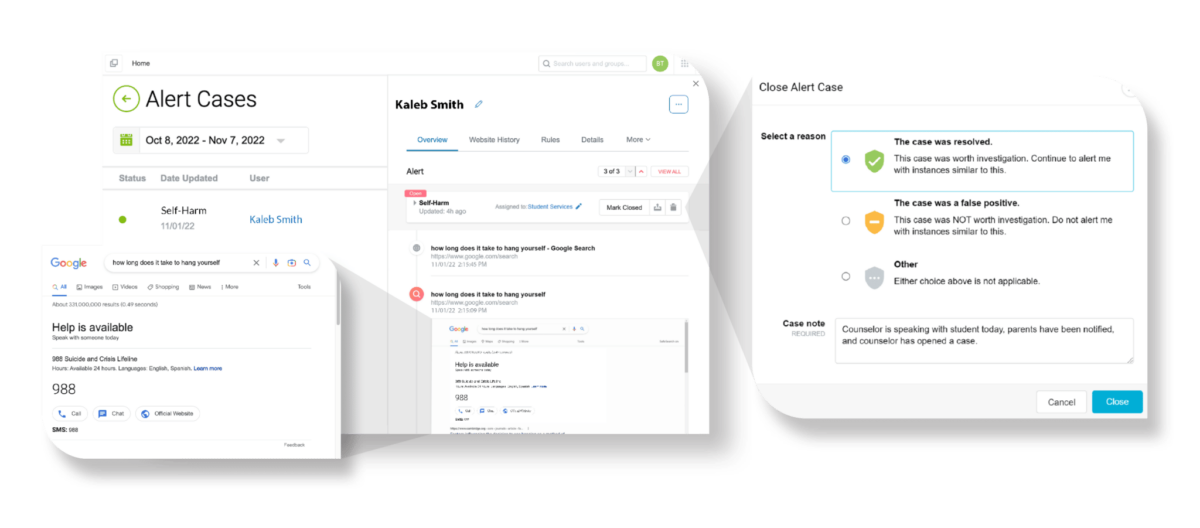
About Lightspeed Alert
Lightspeed Alert is an at-risk student identification solution that monitors and analyzes student online activity for signs of self-harm, violence, and bullying. Lightspeed Alert helps districts proactively identify students in crisis, allowing early intervention and more effective support. By identifying and escalating threats and augmenting existing resources, Lightspeed Alert helps schools detect unknown risks and more effectively direct resources, creating a more responsive school environment and increasing peace of mind.

